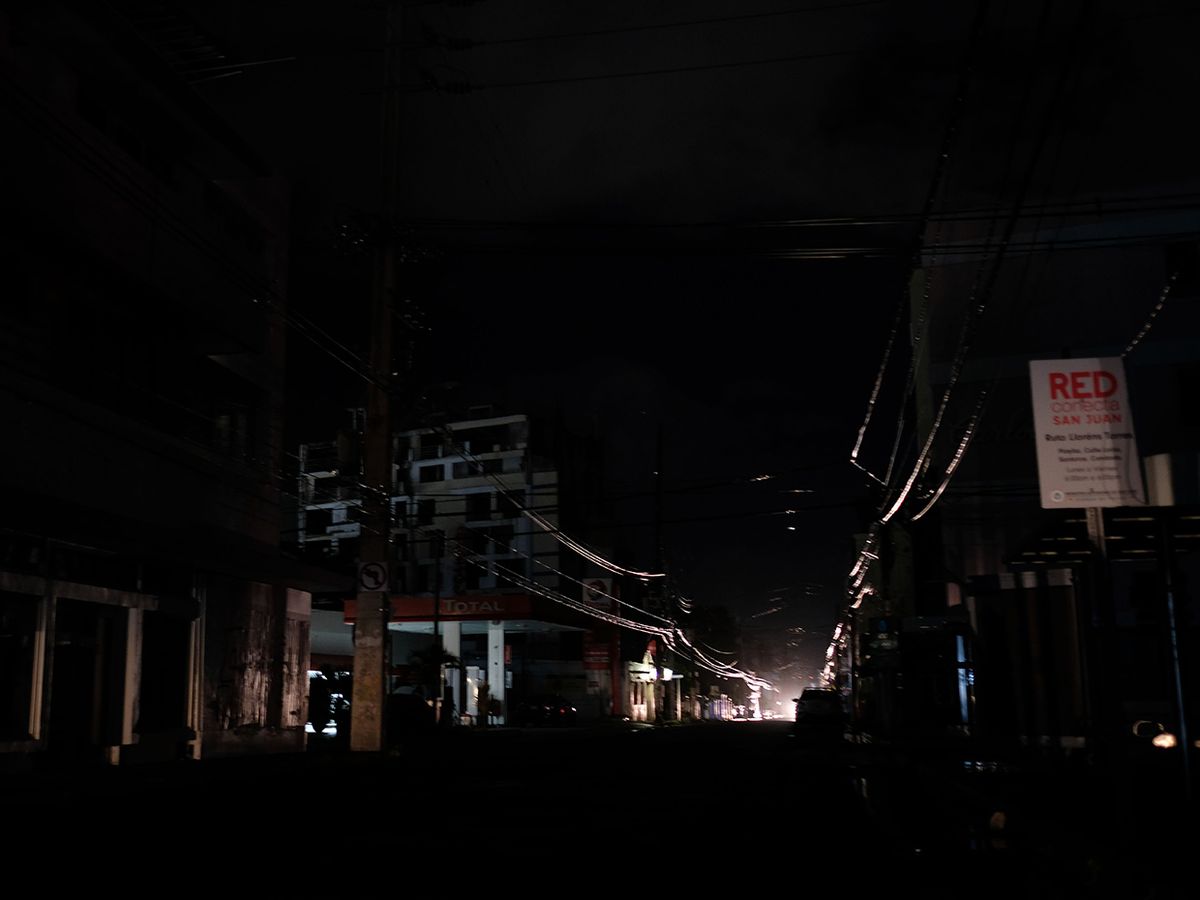Update: On 14 January, PREPA said service had been restored for 99 percent of its customers, though urged customers to use electricity moderately to help stabilize the system, which was still experiencing outages in some areas.
A series of earthquakes left Puerto Rico in the dark this week as power outages swept nearly the entire island. About 80 percent of utility customers had power restored by Friday afternoon, yet authorities warned it could take weeks to stabilize the overall system.
A 6.4-magnitude earthquake rocked the U.S. territory on 7 January following days of seismic activity. Temblors and aftershocks leveled buildings, split streets, and severely damaged the island’s largest power plant, Costa Sur. The blackouts hit a system still reeling from 2017’s Hurricane Maria—which knocked out the entire grid and required $3.2 billion in repairs.
José Ortiz, CEO of the state-run Puerto Rico Electric Power Authority (PREPA), said the 820-megawatt Costa Sur facility suffered the brunt of the earthquake damage. The oil- and gas-burning power plant generates more than one-fourth of the island’s electricity, but this week it became a scene of cracked foundations, fallen equipment, ruptured turbines, and spilled water tanks. When Ortiz toured the plant on 8 January, a smaller earthquake shook the structure and forced utility workers outside.
“Costa Sur is a disaster,” Ortiz said later in a radio interview. “It’s still very unsafe.” He said it could take PREPA a year or longer to repair the power plant in Guayanilla, a municipality near the earthquake epicenters.
Power outages began earlier this week after temblors triggered automatic emergency response systems, which shut off power plants as a safety mechanism, Puerto Rico’s Gov. Wanda Vázquez Garced told the press. But Tuesday’s quake caused physical damage. PREPA engineers were able to restore power within hours to some parts of the island. Yet two-thirds of the utility’s 1.4 million customers remained without power for days.

Costa Sur, as its Spanish name suggests, overlooks the azure waters of Puerto Rico’s south coast. The 47-year-old power plant receives piped natural gas from a newer, neighboring facility run by EcoEléctrica, which also operates a 500-megawatt gas plant. About 70 percent of the island’s power generation is in the south, while 70 percent of power demand is in the north, in cities like the capital San Juan.
When Hurricane Maria struck the island two years ago, it cut a diagonal path from southeast to northwest, mowing down key transmission lines that link supply to demand. Today, however, all of Puerto Rico remains interconnected, meaning that its substations are energized and able to supply power, Ortiz explained. The problem is there’s not enough electricity to distribute.
“What we need is to start generating power,” the PREPA chief said at a Thursday news conference.
To power all of Puerto Rico’s households, PREPA needs an average of 1,800 megawatts at night and 2,300 megawatts during hours of peak demand. By Friday afternoon, the island was generating 1,400 megawatts, up from about 540 megawatts on Wednesday, according to the utility.
Ortiz said the utility would compensate for Costa Sur’s lost power generation by firing up other plants. In the past day, PREPA’s oil-fired Aguirre plant and a coal-fired facility owned by AES Corp. were brought back into service. EcoEléctrica’s facility is expected to come online in the coming days. If all goes as planned, power should be restored to the entire island by the end of the weekend, the PREPA chief said.
Still, Puerto Rico’s grid could remain unstable for several more weeks. Before the earthquakes, the utility was in the process of replacing a transformer in one unit of the Aguirre power plant in Salinas. That fix should provide another 300 megawatts come early February, he said.
Ortiz said he asked the U.S. Federal Emergency Management Agency (FEMA) to supply a generator at Costa Sur to provide 500 megawatts of electricity. However, FEMA told CBS News that the emergency declaration that President Trump signed on 7 January doesn’t allow the agency to provide such generators.
FEMA said it is “supporting and working closely with” officials in Puerto Rico to assess the earthquake damage in the most impacted municipalities: Guanica, Guayanilla, Ponce, and Yauco. “FEMA has prepositioned life-sustaining supplies, including meals and water throughout Puerto Rico to support the needs of the Commonwealth,” a spokesperson said by email.
The New York Power Authority (NYPA) said it sent 10 technical experts to Puerto Rico this week to assist PREPA in emergency response efforts. The state-run utility deployed engineers and line workers to the island after Hurricane Maria and helped write the “Build Back Better” [PDF] report, which outlined a $17.6 billion plan for strengthening Puerto Rico’s grid—including $32 million in repairs and storm hardening measures to the Costa Sur power plant.



